Attached files
| file | filename |
|---|---|
| EX-99.1 - EX-99.1 - BEACON ROOFING SUPPLY INC | d430148dex991.htm |
| 8-K - 8-K - BEACON ROOFING SUPPLY INC | d430148d8k.htm |
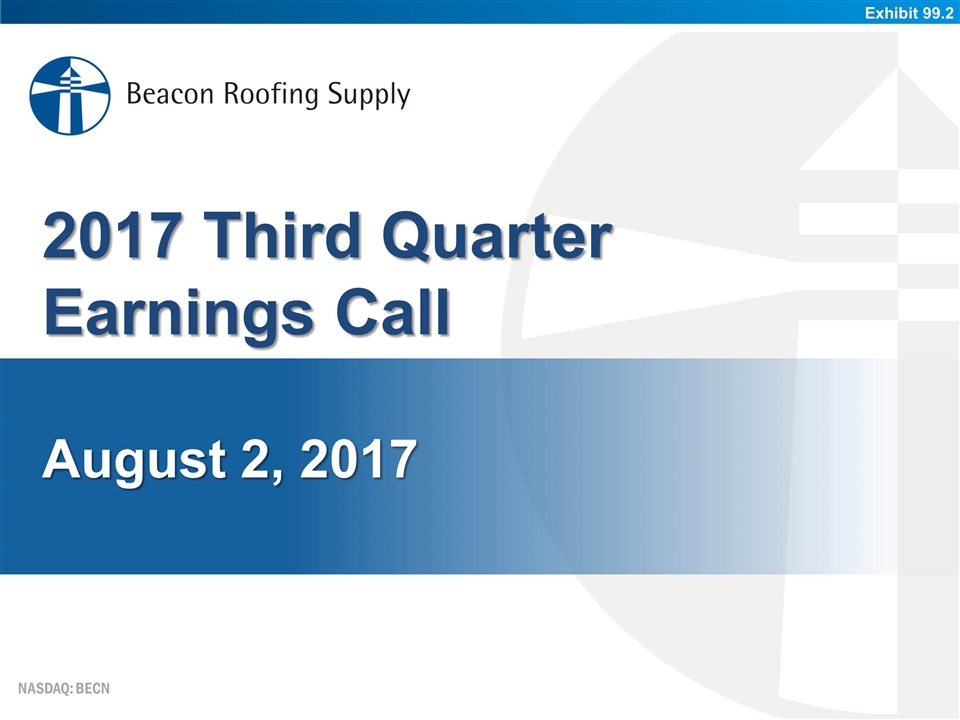
August 2, 2017 2017 Third Quarter Earnings Call Exhibit 99.2
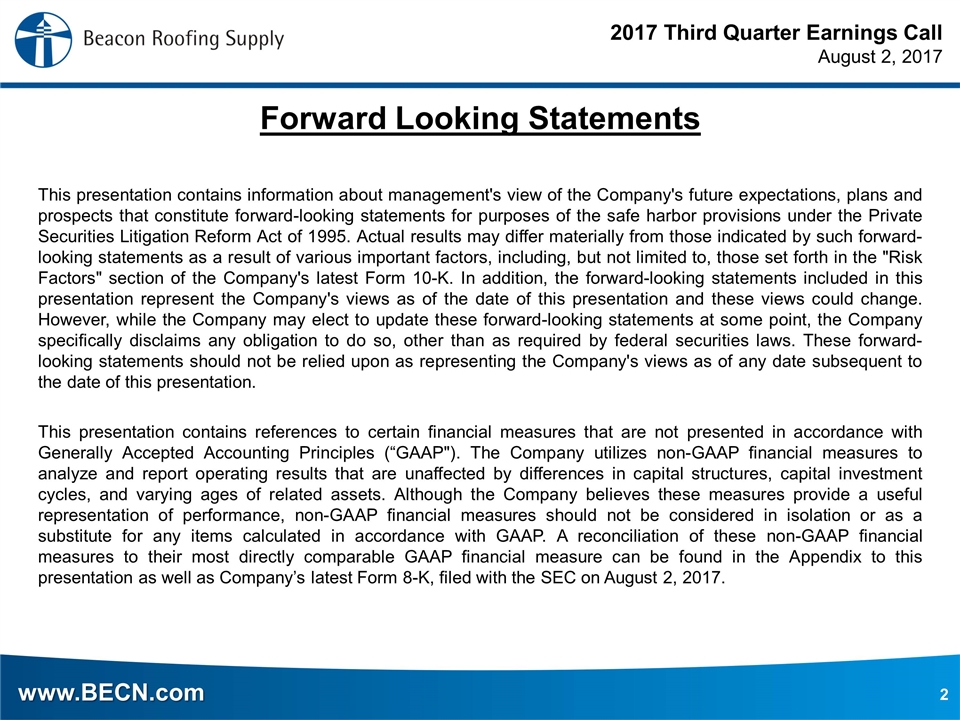
Forward Looking Statements This presentation contains information about management's view of the Company's future expectations, plans and prospects that constitute forward-looking statements for purposes of the safe harbor provisions under the Private Securities Litigation Reform Act of 1995. Actual results may differ materially from those indicated by such forward-looking statements as a result of various important factors, including, but not limited to, those set forth in the "Risk Factors" section of the Company's latest Form 10-K. In addition, the forward-looking statements included in this presentation represent the Company's views as of the date of this presentation and these views could change. However, while the Company may elect to update these forward-looking statements at some point, the Company specifically disclaims any obligation to do so, other than as required by federal securities laws. These forward-looking statements should not be relied upon as representing the Company's views as of any date subsequent to the date of this presentation. This presentation contains references to certain financial measures that are not presented in accordance with Generally Accepted Accounting Principles (“GAAP"). The Company utilizes non-GAAP financial measures to analyze and report operating results that are unaffected by differences in capital structures, capital investment cycles, and varying ages of related assets. Although the Company believes these measures provide a useful representation of performance, non-GAAP financial measures should not be considered in isolation or as a substitute for any items calculated in accordance with GAAP. A reconciliation of these non-GAAP financial measures to their most directly comparable GAAP financial measure can be found in the Appendix to this presentation as well as Company’s latest Form 8-K, filed with the SEC on August 2, 2017.
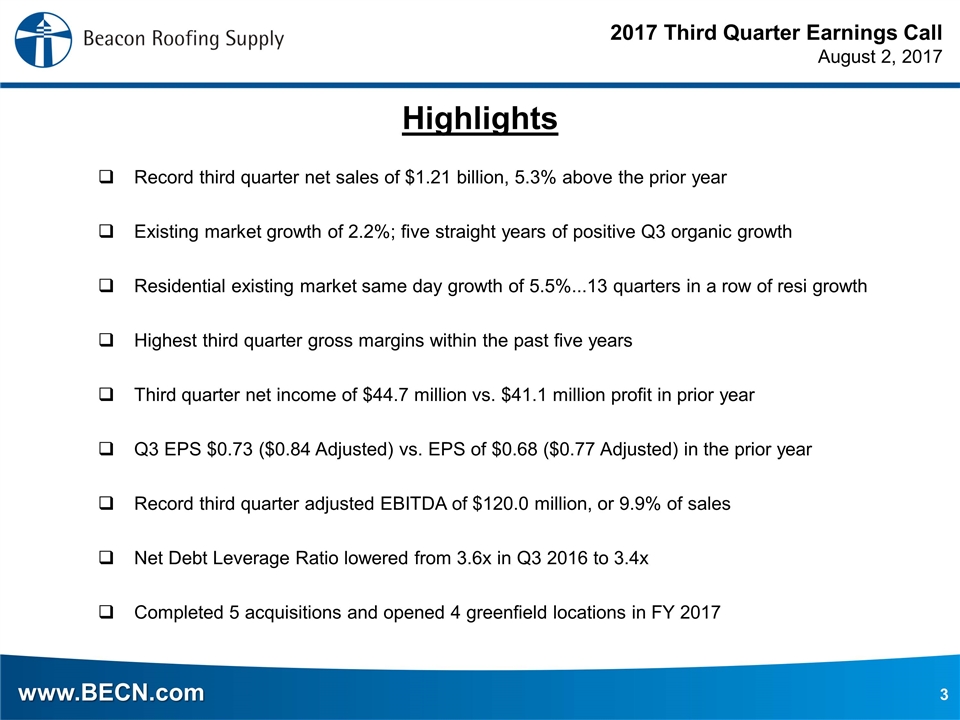
Highlights Record third quarter net sales of $1.21 billion, 5.3% above the prior year Existing market growth of 2.2%; five straight years of positive Q3 organic growth Residential existing market same day growth of 5.5%...13 quarters in a row of resi growth Highest third quarter gross margins within the past five years Third quarter net income of $44.7 million vs. $41.1 million profit in prior year Q3 EPS $0.73 ($0.84 Adjusted) vs. EPS of $0.68 ($0.77 Adjusted) in the prior year Record third quarter adjusted EBITDA of $120.0 million, or 9.9% of sales Net Debt Leverage Ratio lowered from 3.6x in Q3 2016 to 3.4x Completed 5 acquisitions and opened 4 greenfield locations in FY 2017
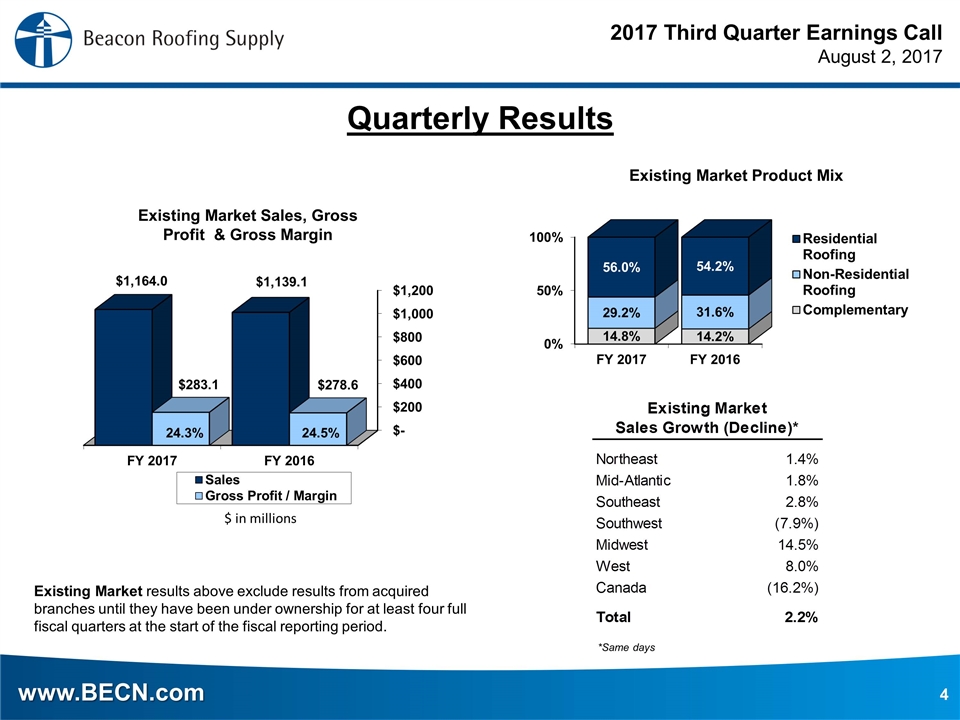
Existing Market Product Mix $ in millions 24.5% Existing Market Sales, Gross Profit & Gross Margin 24.3% Existing Market results above exclude results from acquired branches until they have been under ownership for at least four full fiscal quarters at the start of the fiscal reporting period. Quarterly Results *Same days
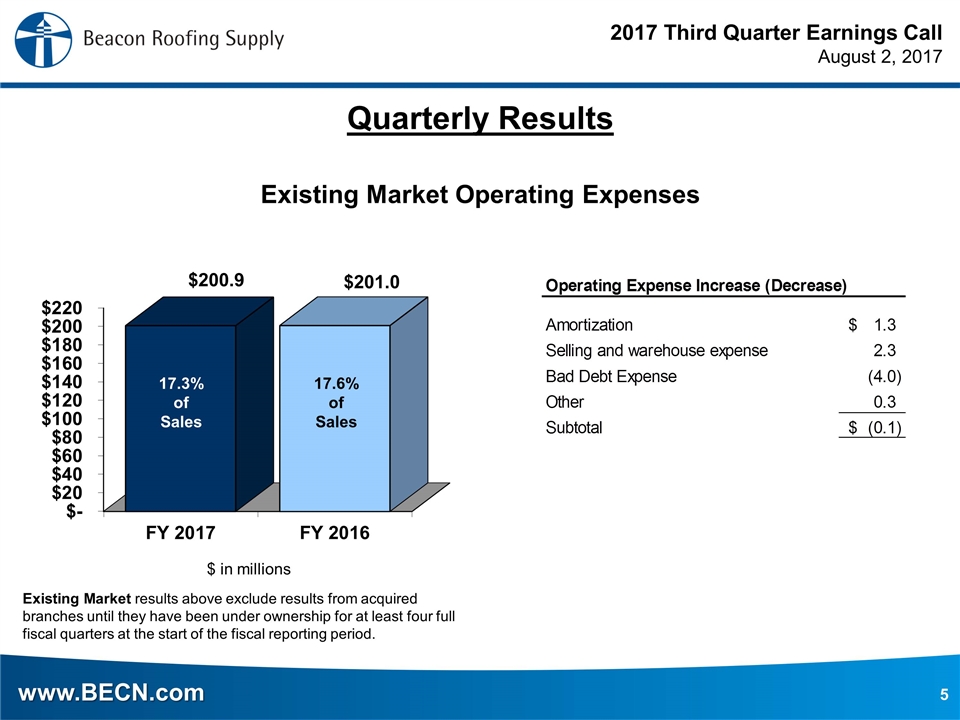
$ in millions 17.3% of Sales 17.6% of Sales Existing Market Operating Expenses Existing Market results above exclude results from acquired branches until they have been under ownership for at least four full fiscal quarters at the start of the fiscal reporting period. Quarterly Results
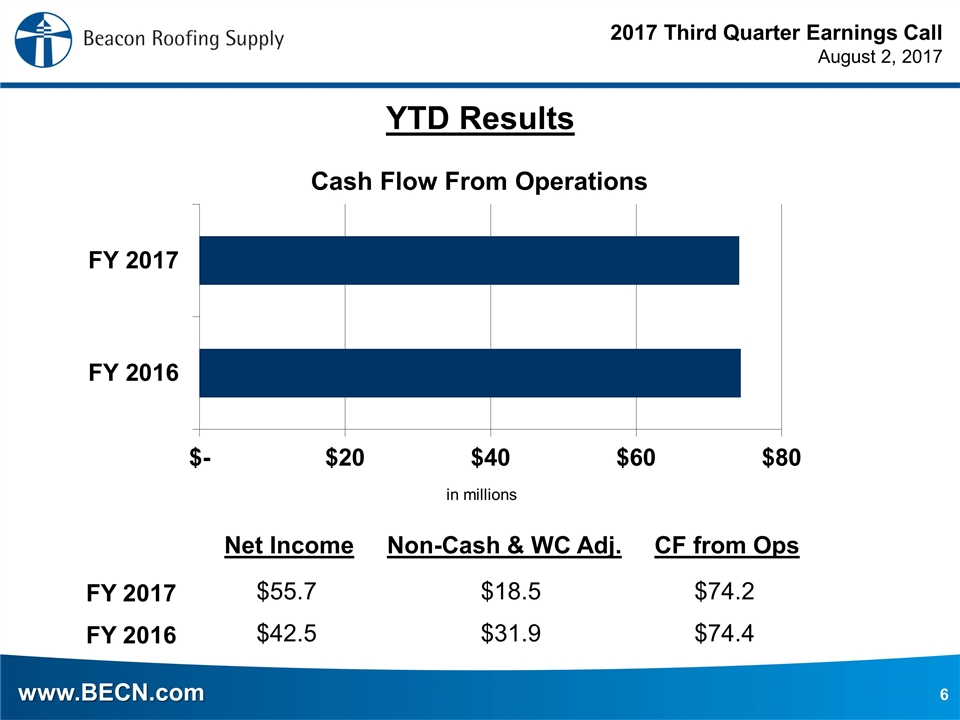
$74.2 $74.4 in millions Cash Flow From Operations CF from Ops $18.5 $31.9 Non-Cash & WC Adj. $55.7 $42.5 Net Income FY 2017 FY 2016 YTD Results

Net Debt Leverage Ratio Capital Expenditures as % of Sales Working Capital as % of Sales Inventory Turns Balance Sheet Metrics
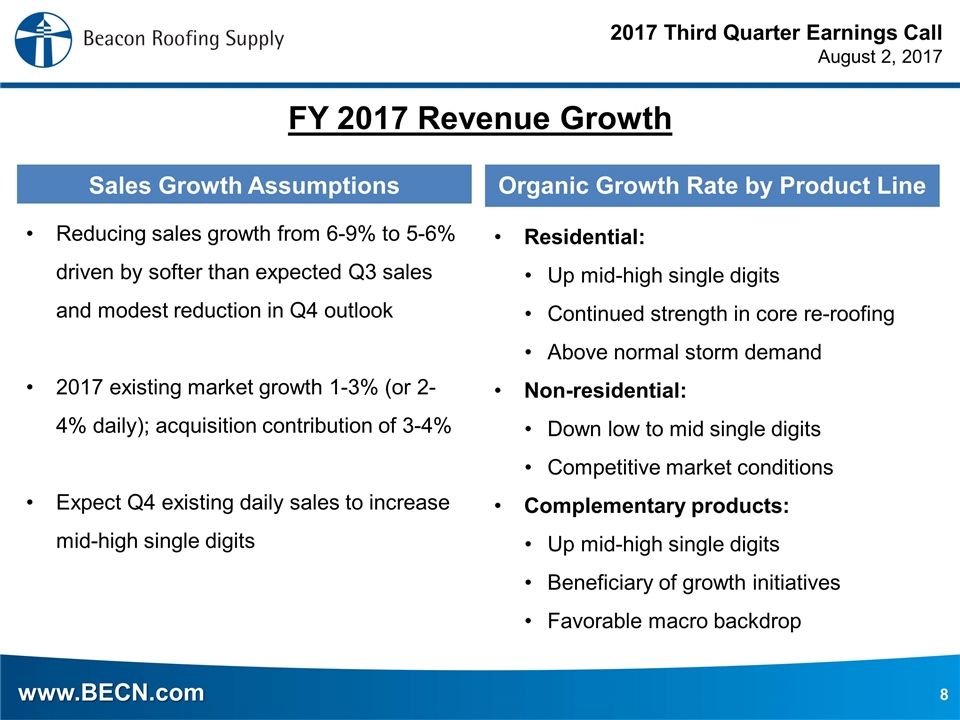
Sales Growth Assumptions Reducing sales growth from 6-9% to 5-6% driven by softer than expected Q3 sales and modest reduction in Q4 outlook 2017 existing market growth 1-3% (or 2-4% daily); acquisition contribution of 3-4% Expect Q4 existing daily sales to increase mid-high single digits Organic Growth Rate by Product Line Residential: Up mid-high single digits Continued strength in core re-roofing Above normal storm demand Non-residential: Down low to mid single digits Competitive market conditions Complementary products: Up mid-high single digits Beneficiary of growth initiatives Favorable macro backdrop FY 2017 Revenue Growth
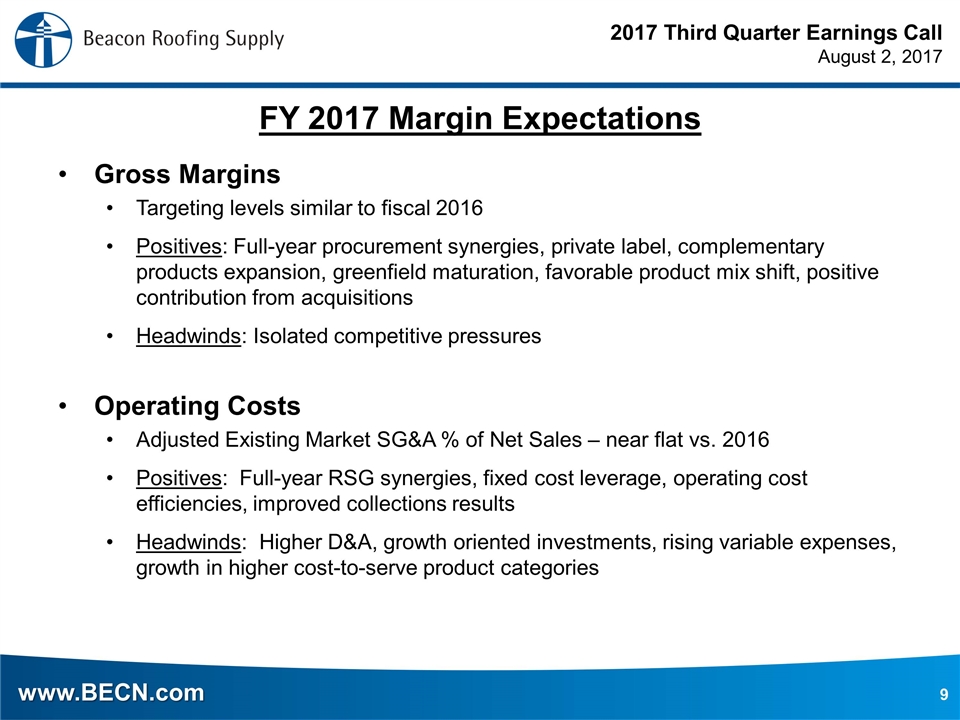
Gross Margins Targeting levels similar to fiscal 2016 Positives: Full-year procurement synergies, private label, complementary products expansion, greenfield maturation, favorable product mix shift, positive contribution from acquisitions Headwinds: Isolated competitive pressures Operating Costs Adjusted Existing Market SG&A % of Net Sales – near flat vs. 2016 Positives: Full-year RSG synergies, fixed cost leverage, operating cost efficiencies, improved collections results Headwinds: Higher D&A, growth oriented investments, rising variable expenses, growth in higher cost-to-serve product categories FY 2017 Margin Expectations

Source: Freedonia and Company Estimates Strong Investment Thesis Solid Financial Performance Fragmented, but consolidating industry Significant advantages to size and scale Recurring base revenue stream (80% re-roof) Favorable cyclical characteristics Strong management team and Board Established growth strategy Proven acquisition integration process Customer focused operational execution Net Sales CAGR ~17% since 2004 Target organic sales growth of 5-10% Target gross margin 23.5% - 25.5% SG&A leverage from 40% fixed costs Target Adjusted EBITDA of 8-11% Low capital expenditures of 0.8%-1.3% Net Debt Leverage Ratio reduced from 4.3x (10/1/15) to 3.4x

19.8% of Sales Adjusted Net Income (Loss) is defined as net income excluding certain non-recurring costs and the incremental amortization of acquired intangibles related to acquisitions completed in fiscal years 2016 and 2017. We believe that Adjusted Net Income (Loss) is an operating performance metric that is useful to investors because it permits investors to better understand year-over-year changes in underlying operating performance. Adjusted net income per share or “Adjusted EPS” is calculated by dividing the Adjusted Net Income (Loss) for the period by the weighted-average diluted shares outstanding for the period. Non-GAAP Adjustments are comprised entirely of non-recurring costs related to acquisitions completed in fiscal years 2016 and 2017 - See "RSG and Other Fiscal 2016-2017 Acquisition Costs" slide for further detail. While we believe Adjusted Net Income (Loss) and Adjusted EPS are useful measures for investors, these are not measurements presented in accordance with United States Generally Accepted Accounting Principles (“GAAP”). You should not consider Adjusted Net Income (Loss) or Adjusted EPS in isolation or as a substitute for net income and net loss per share or diluted earnings per share calculated in accordance with GAAP. Reconciliation: Adjusted Net Income (Loss) /Adjusted EPS Quarter-To-Date
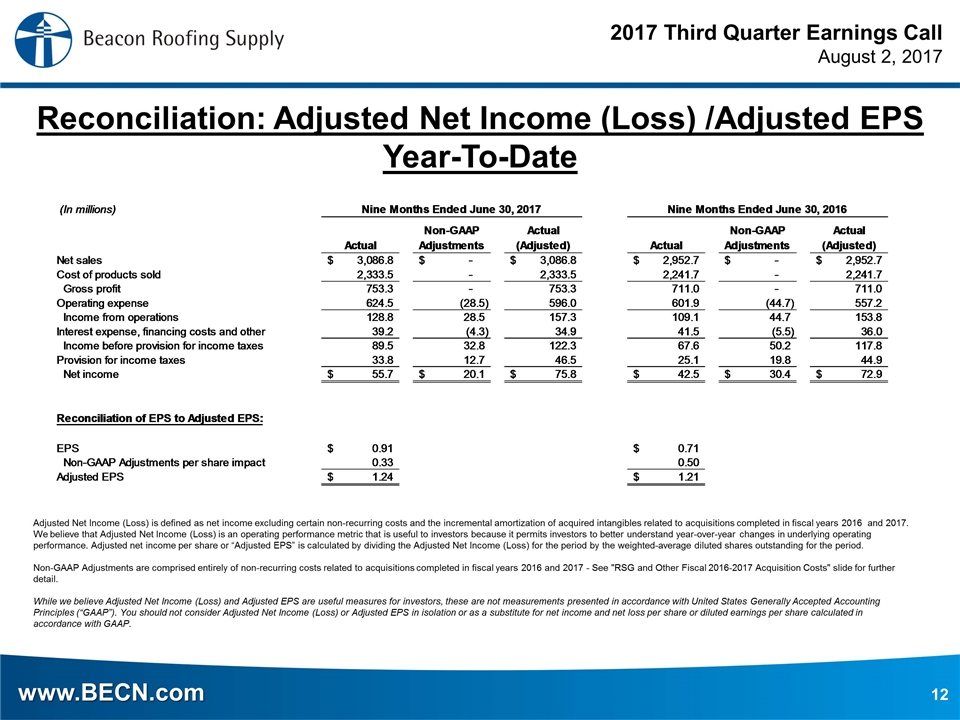
19.8% of Sales Adjusted Net Income (Loss) is defined as net income excluding certain non-recurring costs and the incremental amortization of acquired intangibles related to acquisitions completed in fiscal years 2016 and 2017. We believe that Adjusted Net Income (Loss) is an operating performance metric that is useful to investors because it permits investors to better understand year-over-year changes in underlying operating performance. Adjusted net income per share or “Adjusted EPS” is calculated by dividing the Adjusted Net Income (Loss) for the period by the weighted-average diluted shares outstanding for the period. Non-GAAP Adjustments are comprised entirely of non-recurring costs related to acquisitions completed in fiscal years 2016 and 2017 - See "RSG and Other Fiscal 2016-2017 Acquisition Costs" slide for further detail. While we believe Adjusted Net Income (Loss) and Adjusted EPS are useful measures for investors, these are not measurements presented in accordance with United States Generally Accepted Accounting Principles (“GAAP”). You should not consider Adjusted Net Income (Loss) or Adjusted EPS in isolation or as a substitute for net income and net loss per share or diluted earnings per share calculated in accordance with GAAP. Reconciliation: Adjusted Net Income (Loss) /Adjusted EPS Year-To-Date
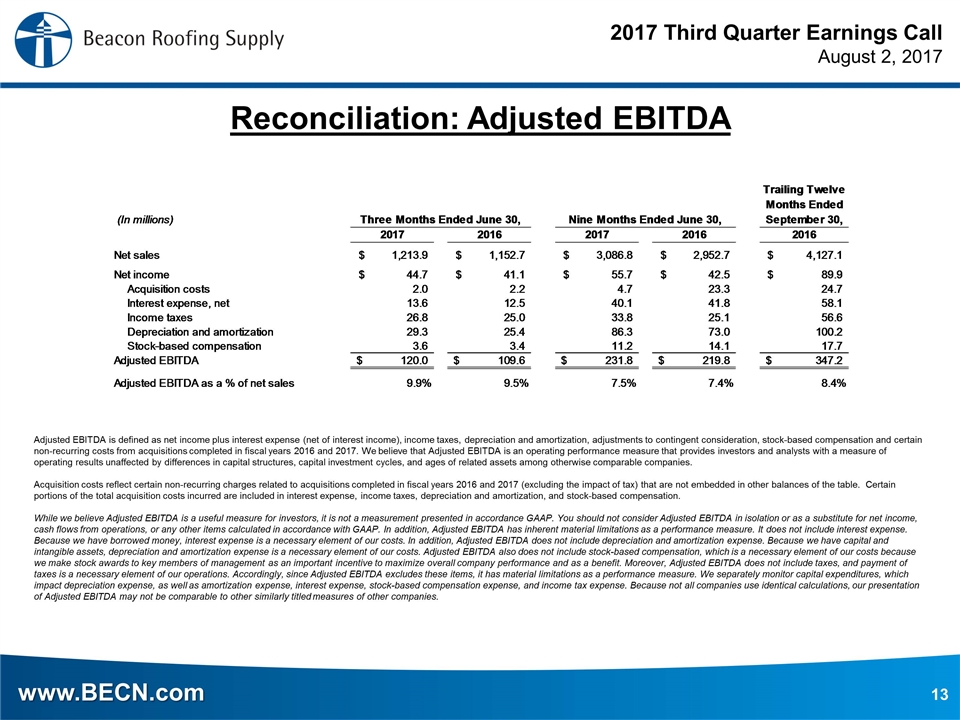
Adjusted EBITDA is defined as net income plus interest expense (net of interest income), income taxes, depreciation and amortization, adjustments to contingent consideration, stock-based compensation and certain non-recurring costs from acquisitions completed in fiscal years 2016 and 2017. We believe that Adjusted EBITDA is an operating performance measure that provides investors and analysts with a measure of operating results unaffected by differences in capital structures, capital investment cycles, and ages of related assets among otherwise comparable companies. Acquisition costs reflect certain non-recurring charges related to acquisitions completed in fiscal years 2016 and 2017 (excluding the impact of tax) that are not embedded in other balances of the table. Certain portions of the total acquisition costs incurred are included in interest expense, income taxes, depreciation and amortization, and stock-based compensation. While we believe Adjusted EBITDA is a useful measure for investors, it is not a measurement presented in accordance GAAP. You should not consider Adjusted EBITDA in isolation or as a substitute for net income, cash flows from operations, or any other items calculated in accordance with GAAP. In addition, Adjusted EBITDA has inherent material limitations as a performance measure. It does not include interest expense. Because we have borrowed money, interest expense is a necessary element of our costs. In addition, Adjusted EBITDA does not include depreciation and amortization expense. Because we have capital and intangible assets, depreciation and amortization expense is a necessary element of our costs. Adjusted EBITDA also does not include stock-based compensation, which is a necessary element of our costs because we make stock awards to key members of management as an important incentive to maximize overall company performance and as a benefit. Moreover, Adjusted EBITDA does not include taxes, and payment of taxes is a necessary element of our operations. Accordingly, since Adjusted EBITDA excludes these items, it has material limitations as a performance measure. We separately monitor capital expenditures, which impact depreciation expense, as well as amortization expense, interest expense, stock-based compensation expense, and income tax expense. Because not all companies use identical calculations, our presentation of Adjusted EBITDA may not be comparable to other similarly titled measures of other companies. Reconciliation: Adjusted EBITDA
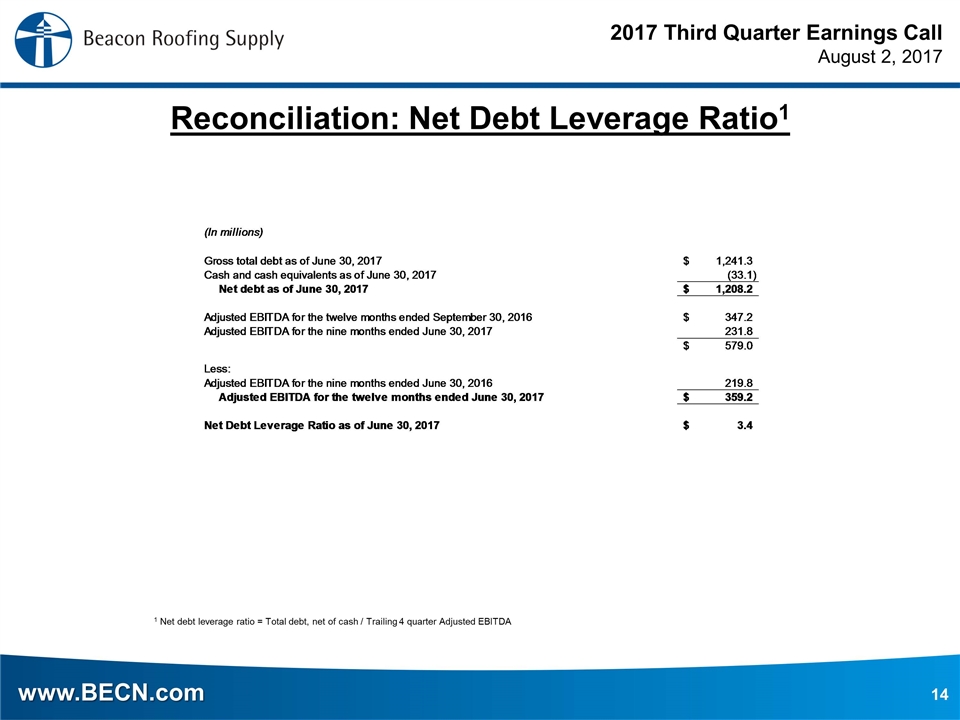
Reconciliation: Net Debt Leverage Ratio1 1 Net debt leverage ratio = Total debt, net of cash / Trailing 4 quarter Adjusted EBITDA
